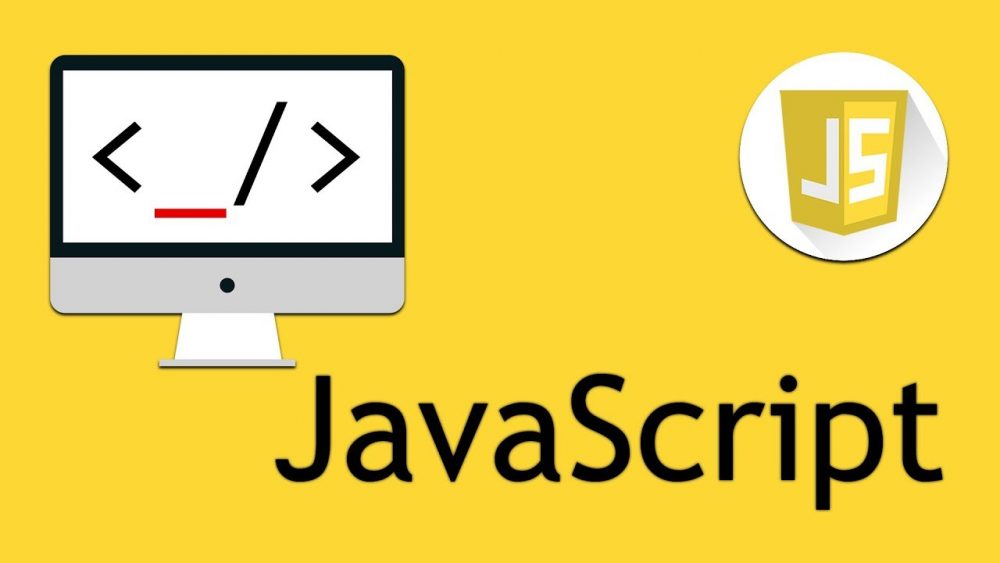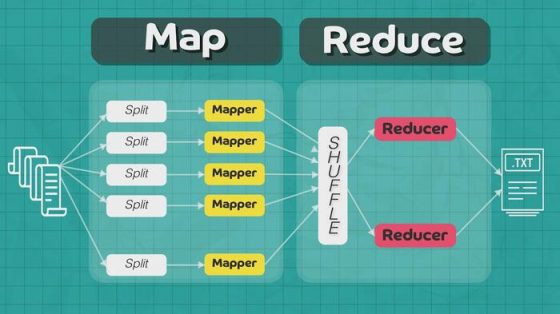
我肯定你之前也听过——异常是个好东西。一开始,我们害怕异常,毕竟写bug容易被人喷。其实通过修bug,我们实际上学会了下次开发怎么避免这个bug并且可以做得更好。
在生活中,我们常说吃一堑长一智。但对于打代码来说,有些不一样。我们的编译器和一些工具现在都很智能,不但告诉我们哪里出错,还帮助我们优化代码【译者:eslint之类的】(有可能还会教我们如何修复bug)。
js异常的一般处理方法
throw new Error('something went wrong')
以上代码将会创建异常实例并停止执行你的脚本,除非你在错误回调里做一些处理。当你开始了js开发者的职业生涯,你自己很可能不会这样做,但是你会在其它的库里(或者运行时)看到类似‘ReferenceError: fs为定义’这样的错误。
异常对象
异常对象有两个属性供我们使用。第一个是message,是你传递给异常的构造函数的参数,比如:
new Error('This is the message')
你可以使用message属性来访问到该消息:
const myError = new Error(‘please improve your code’)
console.log(myError.message) // please improve your code
第二个参数是异常堆栈跟踪,非常重要。你可以使用stack属性来访问。异常堆栈为你提供历史记录(调用堆栈),从中可以查看到哪些文件导致了异常。堆栈顶部也包括了消息,然后是实际的堆栈,从距离异常最近的点开始,然后一直到最外层与异常有关的文件(译者:调用关系的追溯):
Error: please improve your code
at Object.<anonymous> (/Users/gisderdube/Documents/_projects/hacking.nosync/error-handling/src/general.js:1:79)
at Module._compile (internal/modules/cjs/loader.js:689:30)
at Object.Module._extensions..js (internal/modules/cjs/loader.js:700:10)
at Module.load (internal/modules/cjs/loader.js:599:32)
at tryModuleLoad (internal/modules/cjs/loader.js:538:12)
at Function.Module._load (internal/modules/cjs/loader.js:530:3)
at Function.Module.runMain (internal/modules/cjs/loader.js:742:12)
at startup (internal/bootstrap/node.js:266:19)
at bootstrapNodeJSCore (internal/bootstrap/node.js:596:3)
抛出并处理异常
现在单个异常实例没有任何卵用。例如
new Error('...')
以上代码并不会触发任何东西。当异常被抛出,事情就变得有趣了一些。然后,跟上文说的一样,js引擎停止执行你的脚本,除非你做了异常处理。记住,手动抛出异常,还是由库抛出异常,抑或是运行时抛出异常,都没关系。让我们看看在不同场景如何处理这些异常。
try….catch
这是最简单的,但是经常被忘记的异常处理方法——多亏了async/await,越来越多人使用它了。它可以用来捕捉各种类型的非异步错误。例如:
const a = 5
try {
console.log(b) // b is not defined, so throws an error
} catch (err) {
console.error(err) // will log the error with the error stack
}
console.log(a) // still gets executed
如果我们不将console.log(b)包装在try … catch块中,脚本执行将停止。
…finally
有时候有不管有没有异常,都希望执行的代码。你可以使用finally。通常,它与try … catch语句之后只有一行相同,但有时它可能很有用
const a = 5
try {
console.log(b) // b is not defined, so throws an error
} catch (err) {
console.error(err) // will log the error with the error stack
} finally {
console.log(a) // will always get executed
}
异步——回调
异步,这是你在使用js时不得不去考虑的一个主题。当你有个异步方法,并且改方法内部发生异常时,你的脚本会继续执行,不会立即出现任何异常。当使用回调来处理异步方法的返回时(顺便提一下,不提倡使用回调),你通常会接收两个参数,例如:
myAsyncFunc(someInput, (err, result) => {
if(err) return console.error(err) // we will see later what to do with the error object.
console.log(result)
})
如果发生异常,err参数就是那个异常。如果没有,参数就是undefined或者时null。这样做很重要,不然如果你试图访问result.data时,乳沟发生异常,得到的结果就是undefined。
异步——Promises
处理异步的另一种方法时使用promises。除了代码更易读,异常处理也改进了。我们只需要在catch里处理异常就好了,不需要关心怎么捕捉异常。当链式调用promises时,catch会捕获自promise或最后一个catch块执行以来的所有错误。请注意,没有catch的promises不会终止脚本,但是会降低你的异常信息的可读性:
(node:7741) UnhandledPromiseRejectionWarning: Unhandled promise rejection (rejection id: 1): Error: something went wrong
(node:7741) DeprecationWarning: Unhandled promise rejections are deprecated. In the future, promise rejections that are not handled will terminate the Node.js process with a non-zero exit code. */
因此,记得为你的promises加上catch:
Promise.resolve(1)
.then(res => {
console.log(res) // 1
throw new Error('something went wrong')
return Promise.resolve(2)
})
.then(res => {
console.log(res) // will not get executed
})
.catch(err => {
console.error(err) // we will see what to do with it later
return Promise.resolve(3)
})
.then(res => {
console.log(res) // 3
})
.catch(err => {
// in case in the previous block occurs another error
console.error(err)
})
try … catch — again
随着js引入async / await,我们回到了处理异常的原始方式,使用try … catch … finally,这使得处理它们变得轻而易举:
;(async function() {
try {
await someFuncThatThrowsAnError()
} catch (err) {
console.error(err) // we will make sense of that later
}
console.log('Easy!') // will get executed
})()
由于这和我们处理“普通”同步异常方式一样,所以如果有需要,更容易使用更大作用域的catch语句。
服务器端异常产生与处理
 现在我们有处理异常的工具了,让我们看看在实际情况中可以用这些工具做些什么。异常产生后能在后端正确处理是app的关键部分。这列有几种处理异常的方法。我将向你展示自定义error构造函数和错误代码的方法,我们可以轻松地将其传递给前端或任何API调用者。构建后端的细节不重要,基本思路不变。
现在我们有处理异常的工具了,让我们看看在实际情况中可以用这些工具做些什么。异常产生后能在后端正确处理是app的关键部分。这列有几种处理异常的方法。我将向你展示自定义error构造函数和错误代码的方法,我们可以轻松地将其传递给前端或任何API调用者。构建后端的细节不重要,基本思路不变。
我们用Express.js作为路由框架。让我们考虑一下我们希望获得最有效的异常处理的结构。我们想要:
- 一般异常处理,如某种回退,基本上只是说:“有错误,请再试一次或联系我们”。这不是特别好,但至少通知了用户,app出错了——而不是无限加载或者白屏。
- 特殊错误处理为用户提供详细信息,让用户了解有什么问题以及如何解决它们,例如,数据丢失,已存在条目等等。
构建一个自定义error构造函数
我们使用存在的erroe构造函数并且继承它。继承在js中是一件危险的事,但是在这里,我觉得非常有用。为什么我们需要它?我们仍然希望堆栈跟踪为我们提供良好的调试体验。拓展js自带的error构造函数就可以继续使用堆栈跟踪。我们唯一要做的就是添加代码和传递前端error.code
class CustomError extends Error {
constructor(code = 'GENERIC', status = 500, ...params) {
super(...params)
if (Error.captureStackTrace) {
Error.captureStackTrace(this, CustomError)
}
this.code = code
this.status = status
}
}
module.exports = CustomError
如何处理路由
完成error的自定义之后,我们需要设置路由结构。正如我所指出的,我们需要一个单点truth来进行异常处理,这意味着对于每个路由,我们都希望具有相同的异常处理行为。express默认是不支持的,因为路由封装好了。
为了解决这个问题,我们可以实现一个路由处理程序,并把实际的路由逻辑定义为普通函数。这样,如果路由功能(或任何内部函数)抛出异常,他将返回到路由处理程序,然后可以返回给前端。当后端发生错误时,我们用以下格式传递给前端——比如一个JSON API:
{
error: 'SOME_ERROR_CODE',
description: 'Something bad happened. Please try again or contact support.'
}
准备好大吃一惊吧,当我说下面这段话时,我的学生总是生气:
如果你咋看之下不太理解,不用担心。只要使用一段时间,你就会发现为什么要那样。
顺便说一下,这叫自上而下学习,我非常喜欢。
路由处理程序像这样子:
const express = require('express')
const router = express.Router()
const CustomError = require('../CustomError')
router.use(async (req, res) => {
try {
const route = require(`.${req.path}`)[req.method]
try {
const result = route(req) // We pass the request to the route function
res.send(result) // We just send to the client what we get returned from the route function
} catch (err) {
/*
This will be entered, if an error occurs inside the route function.
*/
if (err instanceof CustomError) {
/*
In case the error has already been handled, we just transform the error
to our return object.
*/
return res.status(err.status).send({
error: err.code,
description: err.message,
})
} else {
console.error(err) // For debugging reasons
// It would be an unhandled error, here we can just return our generic error object.
return res.status(500).send({
error: 'GENERIC',
description: 'Something went wrong. Please try again or contact support.',
})
}
}
} catch (err) {
/*
This will be entered, if the require fails, meaning there is either
no file with the name of the request path or no exported function
with the given request method.
*/
res.status(404).send({
error: 'NOT_FOUND',
description: 'The resource you tried to access does not exist.',
})
}
})
module.exports = router
我希望你看下代码的注释,我想这比我在这解释有意义。现在,让我们看下实际的路由文件长什么样子:
const CustomError = require('../CustomError')
const GET = req => {
// example for success
return { name: 'Rio de Janeiro' }
}
const POST = req => {
// example for unhandled error
throw new Error('Some unexpected error, may also be thrown by a library or the runtime.')
}
const DELETE = req => {
// example for handled error
throw new CustomError('CITY_NOT_FOUND', 404, 'The city you are trying to delete could not be found.')
}
const PATCH = req => {
// example for catching errors and using a CustomError
try {
// something bad happens here
throw new Error('Some internal error')
} catch (err) {
console.error(err) // decide what you want to do here
throw new CustomError(
'CITY_NOT_EDITABLE',
400,
'The city you are trying to edit is not editable.'
)
}
}
module.exports = {
GET,
POST,
DELETE,
PATCH,
}
在这些例子中,我没有对实际请求做任何事情,我只是假装不同的异常场景。 因此,例如,GET / city将在第3行结束,POST / city将在第8行结束,依此类推。 这也适用于查询参数,例如 GET / city?startsWith = R. 从本质上讲,您将有一个未处理的异常,前端将收到:
{
error: 'GENERIC',
description: 'Something went wrong. Please try again or contact support.'
}
或者你手动抛出CustomError,例如:
throw new CustomError('MY_CODE', 400, 'Error description')
上述代码会变成:
{
error: 'GENERIC',
description: 'Something went wrong. Please try again or contact support.'
}
现在我们有了这个漂亮的后端设置,我们不再有错误日志泄漏到前端,并将始终返回有关出错的可用信息。
向用户显示异常
下一步也是最后一步是管理前端的异常。 在这里,您希望使用第一部分中描述的工具处理前端逻辑本身产生的异常。但是,也必须显示来自后端的异常。 我们先来看看我们如何显示异常。 如前所述,我们将在演练中使用React。
把异常保存在react state中
接下来我们要澄清的是具有匹配视觉表示的不同类型的异常。就像在后端一样,有三种类型:
- 全局异常,例如,其中一个常见的异常是来自后台,用户没有登录等。
- 来自后台的具体异常,例如,用户向后台发送登录凭证。后台答复密码错误
- 前端导致的异常,例如,电子邮箱格式错误。
2和3虽然源头不一样,但是非常类似并且可以在同样的state处理。我们来看看在代码中如何实现。
我们使用react原声state实现,但是,你可以使用类似MobX或Redux这样的状态管理系统。
全局异常
通常,我将这些异常保存在最外层的有状态组件中并呈现静态UI元素,这可能是屏幕顶部的红色横幅,模态或其他任何内容,设计实现你自己决定。
来看下代码:
import React, { Component } from 'react'
import GlobalError from './GlobalError'
class Application extends Component {
constructor(props) {
super(props)
this.state = {
error: '',
}
this._resetError = this._resetError.bind(this)
this._setError = this._setError.bind(this)
}
render() {
return (
<div className="container">
<GlobalError error={this.state.error} resetError={this._resetError} />
<h1>Handling Errors</h1>
</div>
)
}
_resetError() {
this.setState({ error: '' })
}
_setError(newError) {
this.setState({ error: newError })
}
}
export default Application
正如你所看到的一样,Application.js中的状态存在异常。我们也有方法重置和更改异常值。 我们将值和重置方法传递给GlobalError组件,在点击‘x’时,该组件会显示异常并重置。让我们来看看 我们将值和reset方法向下传递给GlobalError组件:
import React, { Component } from 'react'
class GlobalError extends Component {
render() {
if (!this.props.error) return null
return (
<div
style={{
position: 'fixed',
top: 0,
left: '50%',
transform: 'translateX(-50%)',
padding: 10,
backgroundColor: '#ffcccc',
boxShadow: '0 3px 25px -10px rgba(0,0,0,0.5)',
display: 'flex',
alignItems: 'center',
}}
>
{this.props.error}
<i
className="material-icons"
style={{ cursor: 'pointer' }}
onClick={this.props.resetError}
>
close
</i>
</div>
)
}
}
export default GlobalError
你可以在第五行看到,如果没有异常,我们不会渲染任何内容。这可以防止我们始终在页面上显示空的红色框。当然,你可以更改此组件的外观和行为。例如,你可以使用Timeout替换’x’,以便在几秒钟后重置异常状态。
现在,你已准备好在任何地方使用此全局异常状态,只需从Application.js传递_setError,然后就可以设置全局异常,例如 当来自后端的请求返回时出现字段error:’GENERIC’。例如:
import React, { Component } from 'react'
import axios from 'axios'
class GenericErrorReq extends Component {
constructor(props) {
super(props)
this._callBackend = this._callBackend.bind(this)
}
render() {
return (
<div>
<button onClick={this._callBackend}>Click me to call the backend</button>
</div>
)
}
_callBackend() {
axios
.post('/api/city')
.then(result => {
// do something with it, if the request is successful
})
.catch(err => {
if (err.response.data.error === 'GENERIC') {
this.props.setError(err.response.data.description)
}
})
}
}
export default GenericErrorReq
如果你很懒,你可以在这里停下来。即使你有具体异常,也可以随时更改全局异常状态并在页面顶部显示错误框。但是,本文展示如何处理和显示特定的异常。为什么?首先,这是处理异常的指南,所以我不能就此止步。其次,如果你把所有异常都作为全局状态来显示,那么UX人员会感到很难受。
处理具体的请求异常
与全局异常类似,我们也可以在其他组件中包含局部异常状态。 程序是一样的:
import React, { Component } from 'react'
import axios from 'axios'
import InlineError from './InlineError'
class SpecificErrorRequest extends Component {
constructor(props) {
super(props)
this.state = {
error: '',
}
this._callBackend = this._callBackend.bind(this)
}
render() {
return (
<div>
<button onClick={this._callBackend}>Delete your city</button>
<InlineError error={this.state.error} />
</div>
)
}
_callBackend() {
this.setState({
error: '',
})
axios
.delete('/api/city')
.then(result => {
// do something with it, if the request is successful
})
.catch(err => {
if (err.response.data.error === 'GENERIC') {
this.props.setError(err.response.data.description)
} else {
this.setState({
error: err.response.data.description,
})
}
})
}
}
export default SpecificErrorRequest
这里要记住的一件事,清除异常通常会有不同的触发器。 使用’x’删除异常是没有意义的。在这里,在发出新请求时清除异常会更有意义。你还可以在用户进行更改时清除异常,例如,当输入值改变时。
前端的异常
如前所述,这些异常可以与来自后端的特定异常以相同的方式(状态)处理。 我这次使用带有输入字段的示例,只允许用户删除城市,当他实际提供输入时:
import React, { Component } from 'react'
import axios from 'axios'
import InlineError from './InlineError'
class SpecificErrorRequest extends Component {
constructor(props) {
super(props)
this.state = {
error: '',
city: '',
}
this._callBackend = this._callBackend.bind(this)
this._changeCity = this._changeCity.bind(this)
}
render() {
return (
<div>
<input
type="text"
value={this.state.city}
style={{ marginRight: 15 }}
onChange={this._changeCity}
/>
<button onClick={this._callBackend}>Delete your city</button>
<InlineError error={this.state.error} />
</div>
)
}
_changeCity(e) {
this.setState({
error: '',
city: e.target.value,
})
}
_validate() {
if (!this.state.city.length) throw new Error('Please provide a city name.')
}
_callBackend() {
this.setState({
error: '',
})
try {
this._validate()
} catch (err) {
return this.setState({ error: err.message })
}
axios
.delete('/api/city')
.then(result => {
// do something with it, if the request is successful
})
.catch(err => {
if (err.response.data.error === 'GENERIC') {
this.props.setError(err.response.data.description)
} else {
this.setState({
error: err.response.data.description,
})
}
})
}
}
export default SpecificErrorRequest
我希望你对如何处理异常有所了解。忘记console.error(错误),它是过去的事情了。 可以使用它进行调试,但它不应该在生产版本中。 为了防止这种情况,我建议你使用一个日志库,我过去一直在使用loglevel,我很满意。
本文文字及图片出自 www.jianshu.com


















你的反应是: